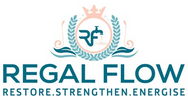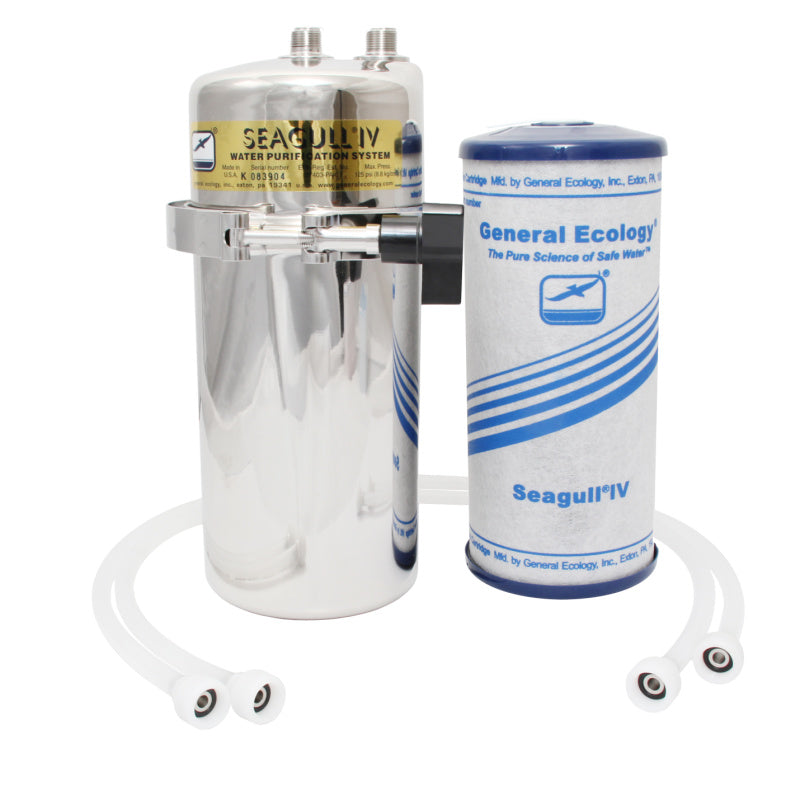Introduction
A Water Purification System is a method or device designed to remove contaminants, impurities, and harmful substances from water, making it safe for consumption and household use. These contaminants can include bacteria, viruses, heavy metals, chlorine, pesticides, and microplastics. Purification systems vary in complexity, from simple activated carbon filters to advanced multi-stage technologies like reverse osmosis (RO) and nanofiltration. Beyond safety, they also improve water’s taste, odour, and clarity, ensuring a better drinking experience.
How Water Purification Works
Water purification works by passing water through one or multiple filtration stages that trap, neutralise, or separate contaminants. Each stage targets specific impurities. For example, sediment filters remove visible dirt and rust, while activated carbon adsorbs chlorine and chemicals, and reverse osmosis membranes remove microscopic dissolved solids.
Common Purification Methods
-
Sedimentation: Basic process allowing large particles to settle naturally at the bottom before water is drawn off.
-
Activated Carbon Filtration: Uses porous carbon blocks to adsorb chemicals like chlorine, VOCs, and pesticides. Improves taste and odour.
-
UV Treatment: Ultraviolet light kills bacteria, viruses, and pathogens without adding chemicals.
-
Distillation: Boils water and condenses the steam to separate it from contaminants.
-
Ion Exchange: Softens hard water by exchanging calcium and magnesium with sodium or potassium ions.
Why Membrane Technologies Matter
Membrane filtration, particularly reverse osmosis, uses a semi-permeable membrane to remove dissolved salts, heavy metals, and even microscopic contaminants. RO membranes filter as fine as 0.0001 microns, providing exceptional purification.
Reverse Osmosis vs. Other Purification Methods
What Is Reverse Osmosis?
Reverse osmosis forces water through a semi-permeable membrane under pressure. Contaminants like heavy metals, salts, fluoride, arsenic, and bacteria are blocked, leaving only pure water molecules. RO removes up to 99% of contaminants, making it one of the most comprehensive solutions available.
How RO Compares to Other Methods
-
RO vs. Carbon Filtration: Carbon removes chlorine and odours but does not eliminate dissolved solids or pathogens.
-
RO vs. UV Treatment: UV kills bacteria but does not remove chemicals or heavy metals.
-
RO vs. Distillation: Distillation purifies water but is energy-intensive and slow, while RO is faster and more efficient for households.
Who Benefits from a Water Purification System?
-
Families & Children: Kids are more susceptible to lead, bacteria, and nitrates. Purified water prevents long-term health risks and supports healthy development.
-
People with Health Conditions: Immunocompromised individuals, dialysis patients, and those with kidney or gastrointestinal issues benefit greatly from purified water.
-
Travelers in Caravans, Motorhomes, and Yachts: Built-in systems provide safe water even when sourcing from campgrounds or natural sources.
Key Benefits & Use Cases
Why Install a Water Purification System?
-
Health Protection: Removes harmful pathogens, heavy metals, and chemicals linked to illnesses.
-
Better Taste & Odour: Eliminates chlorine and sulfur smells, making water refreshing and clean.
-
Appliance Protection: Reduces limescale, extending the lifespan of kettles, dishwashers, and boilers.
-
Environmental Impact: Cuts reliance on bottled water, reducing plastic waste and carbon emissions.
Size, Installation & Maintenance
Residential systems are typically compact and designed for easy installation. Under-sink RO systems fit in kitchen cabinets, while countertop systems are even smaller. Whole-house systems (point-of-entry) are larger but ensure every tap delivers purified water.
Installation: Most point-of-use systems come with DIY kits and take about 30 minutes to set up without professional help.
Maintenance: Simple and low-cost. Filters need replacing every 6–12 months; RO membranes usually last up to 24 months. Many modern systems feature filter-life indicators for convenience.
Conclusion – Why Water Purification Matters
Water purification systems aren’t just a convenience—they’re a necessity for health and sustainability. Whether you want to protect your family, improve water taste, or reduce bottled water waste, installing a purification system is a long-term investment in better living.
Reverse Osmosis vs. Other Purification Methods
What Is Reverse Osmosis?
Reverse osmosis uses pressure to force water through a fine membrane, removing up to 99% of contaminants. It’s one of the most effective purification methods available.
Differences Between RO and Broader Purification Techniques
While water purification is a general term for all cleaning methods, RO is a specific technology within this category, offering the highest level of contaminant removal.
Who Needs Water Purification? Health Benefits for Vulnerable Groups
Individuals with weakened immune systems may seek the safety of water purification to help guard against infections.
The removal of heavy metals can offer comfort to those with kidney problems; hence, dialysis centres use water purification systems.
Individuals with allergies might seek purified water to avoid irritants in unfiltered water.
Patients with gastrointestinal issues can enhance their resilience to waterborne diseases.
Asthma sufferers may find access to purified water for drinking and cooking ensures that individuals with asthma are not exposed to any potential irritants or allergens in unfiltered water.
Water purification is regularly chosen by pregnant women to reduce potential risks to their baby's health.
Seniors may choose water purification for added safety against contaminants.
Children, Purified water is essential for children as it safeguards their health by eliminating harmful contaminants, ensuring proper hydration, and supporting optimal growth and cognitive development.
Cancer patients undergoing treatment could use purified water to minimise risks. Purified Water is gentle on the stomach and minimises risks to potentially irritating chemicals.
Anyone with sensitivities to specific contaminants may opt for water purification for their well-being.
Will they work well in a caravan, motorhome or even a yacht ?
Absolutely! Access to purified water on the go not only promotes better health but also adds comfort during your adventures. Water purification systems are increasingly popular among travellers, caravan owners, and boat enthusiasts because they make safe drinking water available anywhere.

Why Install a Purification System for Travel?
-
Safe Drinking Water Anywhere
Purification systems ensure water for drinking, cooking, and washing is free from harmful contaminants, reducing the risk of waterborne illnesses while on the road or at sea. -
Versatility in Sourcing Water
With a built-in system, you can draw water from campsites, lakes, rivers, or marinas and still enjoy clean, purified water. This is essential for remote adventures. -
Convenience for Long Trips
Reduce reliance on bottled water during extended trips. This saves space, reduces plastic waste, and ensures you always have a reliable water supply. -
Compact & Easy to Install
Many water purification systems designed for caravans, motorhomes, and yachts are compact and simple to install, making them a perfect choice for travellers.
Other potential reasons to use a purification system
Protecting Against Hard Water: Some areas have hard water, which contains high levels of minerals like calcium and magnesium. A water softener, often included in purification systems, can prevent mineral build up in pipes and appliances.
Contaminated Water Areas: Individuals living in regions with known water quality issues, such as high levels of lead, arsenic, or bacterial contamination, can significantly benefit from water purification systems.
Environmental Impact: By using a water purification system, you reduce your reliance on bottled water. This, in turn, reduces plastic waste and the environmental impact of bottling, transporting, and disposing of bottled water
Is a Water Purification System the Same as Reverse Osmosis?
Not exactly. Water purification and reverse osmosis are related, but they’re not identical.
What Is Water Purification?
Water purification is a broad term that refers to any process or device that removes impurities from water to make it safe for drinking or other uses. This can involve several methods, such as:
-
Filtration: Removes particles like dirt, rust, and sediment.
-
Chemical Treatment: Neutralises harmful microorganisms using chlorine or other disinfectants.
-
UV Sterilisation: Uses ultraviolet light to kill bacteria and viruses.
-
Distillation & Sedimentation: Physical techniques that separate water from contaminants.
What Is Reverse Osmosis (RO)?
Reverse osmosis is a specific water purification technology. It works by forcing water through an ultra-fine semi-permeable membrane under pressure, which blocks contaminants such as:
-
Salts and dissolved minerals
-
Heavy metals (lead, arsenic, mercury)
-
Fluoride and nitrates
-
Organic compounds and some microorganisms
RO membranes filter down to 0.0001 microns, delivering one of the highest levels of water purity available for residential and commercial systems. This makes RO systems particularly effective in areas with hard water or high levels of contaminants.
Want to learn more or upgrade your home water quality? Explore our full range of Under-Sink Reverse Osmosis Systems designed for superior filtration and long-lasting performance.
The Key Difference
-
Water Purification: A broad category of methods for cleaning water.
-
Reverse Osmosis: One of the most advanced technologies within that category, delivering exceptional contaminant removal.
The best option depends on your water source, the contaminants present, and your quality goals.
How Big Are Water Purification Systems?
The size of a water purification system depends on its purpose, capacity, and technology. Systems range from portable devices for individual use to large-scale solutions for entire homes.
Our systems are designed for residential use, meaning they’re compact and space-saving—perfect for kitchens, motorhomes, and caravans. Most fit easily under a sink or on a countertop, providing powerful filtration without taking up too much room.
Point-of-Use (POU) Systems
These are small, compact units that filter water at the point of consumption, such as your kitchen sink. Examples include countertop water filters and under-sink reverse osmosis systems. They’re ideal for homes, apartments, caravans, and motorhomes thanks to their minimal footprint.
✔ Explore our range of space-saving under-sink reverse osmosis systems, designed for high performance in compact spaces.
Whole-House Filtration Systems
Also known as point-of-entry (POE) systems, these units purify all the water entering your home, ensuring every tap delivers clean, safe water. They are larger than under-sink systems and typically installed in a utility room or basement, roughly the size of a standard water heater.
✔ Discover our selection of whole house filtration systems to protect your entire home from contaminants and scale build-up.
Can I Install the System Myself, or Do I Need Professional Installation?
Yes, in most cases you can install the system yourself without hiring a plumber. Point-of-use systems—such as under-sink reverse osmosis units and countertop water filters—are designed for simple installation using standard tools. Most homeowners with basic plumbing skills can complete the setup in less than an hour.
Every system comes with step-by-step installation instructions, and many brands provide video guides for extra support.
✔ Explore our under-sink reverse osmosis systems for models designed with DIY installation in mind.
What Maintenance Is Required?
Maintenance is minimal. Since these systems have no electrical components or complex moving parts (aside from ceramic components in the faucet), they are essentially maintenance-free.
To keep your system in top condition:
-
Clean the faucet and housing with a soft cloth and non-abrasive cleaner
-
Replace Filter Cartridges as recommended—usually every 6 to 12 months, depending on water quality and usage
-
Check for filter life indicators if your model includes one
This ensures optimal filtration performance and extends the life of your system.
Can I Change the Purification Cartridge Myself?
Yes, absolutely. Cartridge replacement is designed to be quick and hassle-free—no tools or plumbing experience required. Each filter comes with clear instructions, and most systems feature a twist-and-lock design that allows you to replace the cartridge in just a few seconds.
✔ Shop genuine replacement filters in our Water Purification Collection to ensure compatibility and performance
Conclusion
Water purification systems are an incredible advancement in technology that plays a pivotal role in safeguarding our health and the environment. Access to clean and safe drinking water is not a luxury but a basic human right, and water purification systems ensure that this right is upheld. They reduce the risk of waterborne diseases, remove harmful contaminants, improve the taste and odour of water, and have numerous health benefits.











